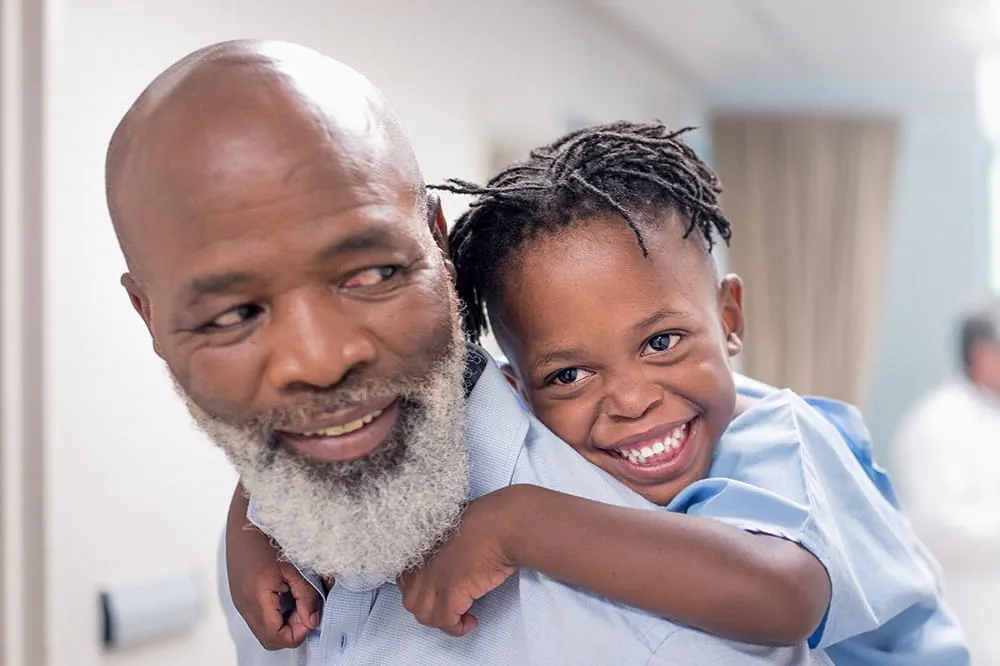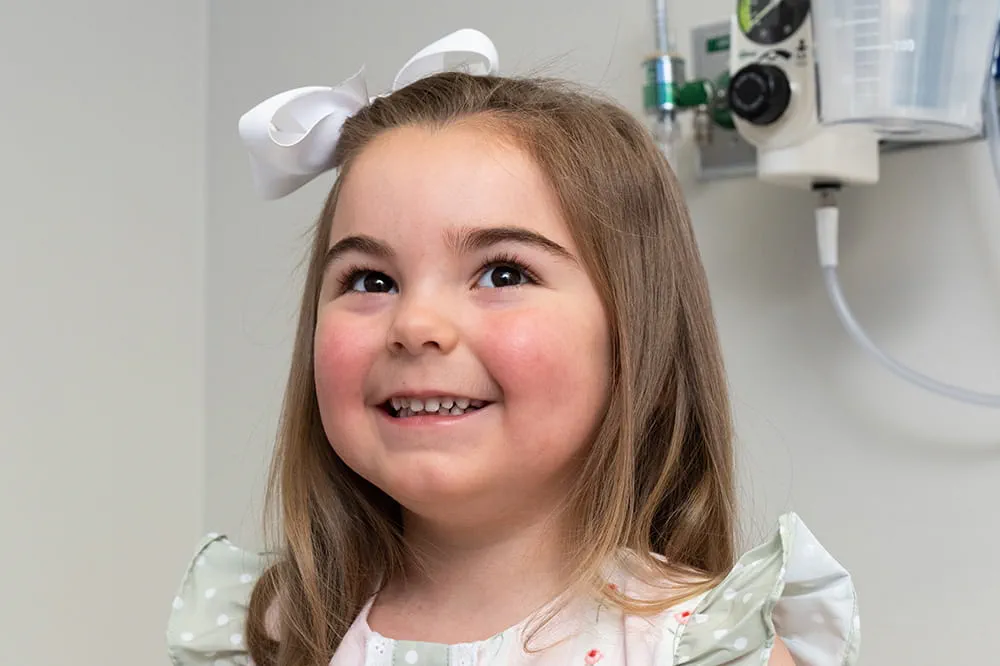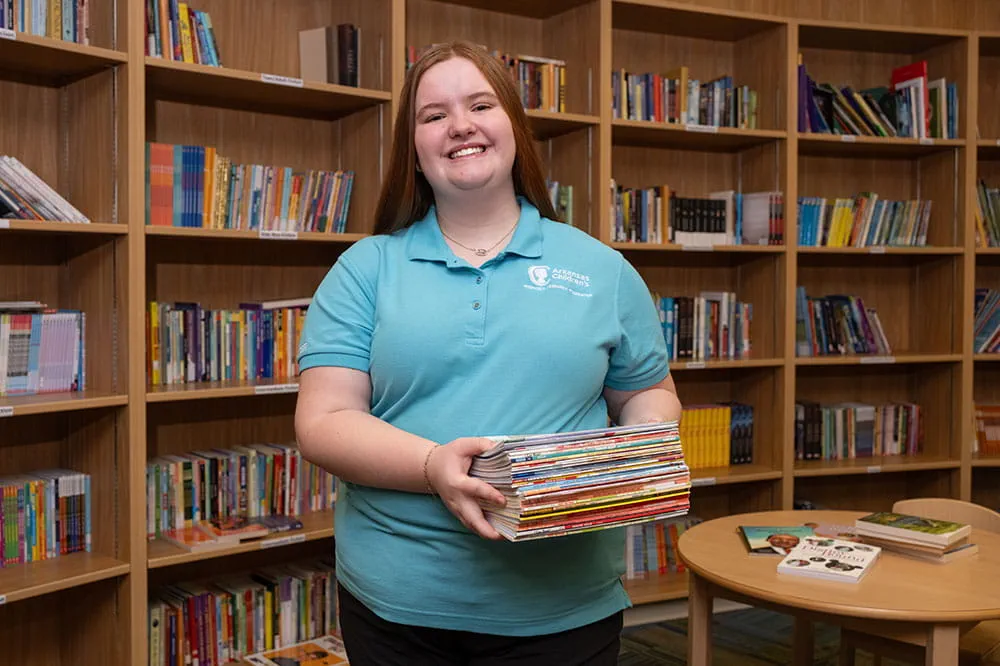GIVE NOW before 2025 ends—your gift will be doubled to help children in need. Click here to 2x your impact!

Ranked nationally in pediatric care.
Arkansas Children's provides right-sized care for your child. U.S. News & World Report has ranked Arkansas Children's in seven specialties for 2025-2026.

It's easier than ever to sign up for MyChart.
Sign up online to quickly and easily manage your child's medical information and connect with us whenever you need.

We're focused on improving child health through exceptional patient care, groundbreaking research, continuing education, and outreach and prevention.

When it comes to your child, every emergency is a big deal.
Our ERs are staffed 24/7 with doctors, nurses and staff who know kids best – all trained to deliver right-sized care for your child in a safe environment.

Arkansas Children's provides right-sized care for your child. U.S. News & World Report has ranked Arkansas Children's in seven specialties for 2025-2026.

Looking for resources for your family?
Find health tips, patient stories, and news you can use to champion children.

Support from the comfort of your home.
Our flu resources and education information help parents and families provide effective care at home.

Children are at the center of everything we do.
We are dedicated to caring for children, allowing us to uniquely shape the landscape of pediatric care in Arkansas.

Transforming discovery to care.
Our researchers are driven by their limitless curiosity to discover new and better ways to make these children better today and healthier tomorrow.

We're focused on improving child health through exceptional patient care, groundbreaking research, continuing education, and outreach and prevention.

Then we're looking for you! Work at a place where you can change lives...including your own.

When you give to Arkansas Children's, you help deliver on our promise of a better today and a healthier tomorrow for the children of Arkansas and beyond

Become a volunteer at Arkansas Children's.
The gift of time is one of the most precious gifts you can give. You can make a difference in the life of a sick child.

Join our Grassroots Organization
Support and participate in this advocacy effort on behalf of Arkansas’ youth and our organization.

Learn How We Transform Discovery to Care
Scientific discoveries lead us to new and better ways to care for children.

Learn How We Transform Discovery to Care
Scientific discoveries lead us to new and better ways to care for children.

Learn How We Transform Discovery to Care
Scientific discoveries lead us to new and better ways to care for children.

Learn How We Transform Discovery to Care
Scientific discoveries lead us to new and better ways to care for children.

Learn How We Transform Discovery to Care
Scientific discoveries lead us to new and better ways to care for children.

Learn How We Transform Discovery to Care
Scientific discoveries lead us to new and better ways to care for children.

When you give to Arkansas Children’s, you help deliver on our promise of a better today and a healthier tomorrow for the children of Arkansas and beyond.

Your volunteer efforts are very important to Arkansas Children's. Consider additional ways to help our patients and families.

Join one of our volunteer groups.
There are many ways to get involved to champion children statewide.

Make a positive impact on children through philanthropy.
The generosity of our supporters allows Arkansas Children's to deliver on our promise of making children better today and a healthier tomorrow.

Read and watch heart-warming, inspirational stories from the patients of Arkansas Children’s.
Hello.

Arkansas Children's Hospital
General Information 501-364-1100
Arkansas Children's Northwest
General Information 479-725-6800

Car Seat Safety
There are many things to know when trying to find a car seat for your infant to use after being discharged from the NICU at Arkansas Children's. Learn more about how to keep your child safe using the information below.
- Choose an infant car seat with a 5-point harness. There should be a least 3 shoulder strap levels for adjustments. Be careful about purchasing a car seat, not all car seats work for all infants.
- Do not purchase or accept a second-hand car seat (typically found at garage sales or consignment shops).
- Car seats expire. You can find the manufacture date on the label affixed to the underside of the car seat. Sometimes an expiration date will be listed there as well. Check the car seat manual to see how many years from manufacture until the car seat expires.
- ALWAYS follow car seat instructions and car owner's manual.
- NEVER install a car seat in the front seat that has an airbag. The back seat is safer for all children.
- The straps should fit snuggly.
- All infants and children should remain rear facing as long as possible, up to the highest weight or height allowed by the car seat manufacturer.
- Always use your car seat when in the car even if you are just driving around the corner.
- Only use the car seat in the car. Your baby needs to sleep lying flat on his/her back.
- Dress your baby in clothes with legs so the harness straps fit between the legs.
- Avoid a thick snowsuit or wrapping baby in a blanket. You may add blankets over the straps.
- Avoid thick padding under or behind your baby. It could make the harness too loose, so your baby could be thrown out in a crash. Using after-market products such as head positioning devices that do not come with the seat will also void your warranty on the car seat.
- A support pad that came with the car seat can be used if it does not push the baby's head forward.
- The shoulder straps should fit at or below the baby's shoulders. If the lowest position makes straps come out near baby's ears or higher, use a different seat.
- Your baby's bottom should be flat on the bottom of the seat with their back against the seat.
- For support, it is okay to use small rolled baby blankets and place them on either side of the baby. Do not place them under the baby or the straps.
- Fasten the chest clip and buckle between the legs. Make the harness snug, so you cannot pinch any slack in the shoulder straps.
- Place the chest clip at armpit level.
- Install the car seat tightly. It should not move more than an inch forward or side to side.
- ALWAYS follow car seat instructions and car manual.
- NOTE: If baby has a breathing monitor, oxygen, or other equipment, secure it so it will move as little as possible in a crash. Use a seat belt or wedge it on the floor of the car.
- You will receive a car seat booklet during your stay in the NICU that will help guide you in purchasing car seats, installing car seats and fitting your baby in the car seat. You will also be required to watch a car seat video prior to discharge. A car seat technician and/or advocate are able to answer any question you may have about car seats.
Some car seats are safety rated for smaller infants (less than 5 lbs), and fit many preemies well. This kind of car seat can be easy to use and easy to carry.
- A low weight limit to match your baby's weight. Many car seats are limited to babies 5 pound or more, but some start at 4 pounds.
- 5 point harness (shoulder, hip and crotch straps) to keep baby in position best.
- Front harness adjuster.
- Low shoulder strap position will help make sure the harness fits well.
- Harness chest clip that is easy to see and understand.
- Level (recline) guides that are easy to see and understand.
- Level adjuster that is easy to use to change the tilt of the car seat. Look for an adjuster that has many positions.
Look for these features:
Most babies can ride safely in a semi-reclined, rear-facing car seat with low harness slots. However, some premature babies may show signs of trouble when sitting up.
The American Academy of Pediatrics (AAP) recommends monitoring each baby born earlier than 37 weeks in a car seat before the baby goes home. The monitoring is called Angle Tolerance Testing. This is to check for signs of trouble, such as slow heartbeat, too little oxygen in the blood, or periods of not breathing. If your baby shows any of these signs, he or she may need to ride lying flat in a crash-tested car bed. Use the car bed until the doctor tells you your baby can sit up safely. Also, avoid using a baby seat or swing at home during this time.
The Angle Tolerance Testing is done within 7 days of the baby going home. The baby is placed in the car seat that will be used after going home. The baby is monitored for a minimum of 90 minutes or the length of the car ride home (up to 3 hours) for changes in heart rate, oxygen level and breathing.
- You will receive education on how to install the car bed.
- Place the bed so the infant's head is near the center of the vehicle.
- Secure the baby on his back unless the prone position is medically necessary.
- If your baby is using a car bed due to failing an angle tolerance test, a repeat angle tolerance test is required before transitioning baby to a rear facing car seat.
Using a Car Bed Correctly

